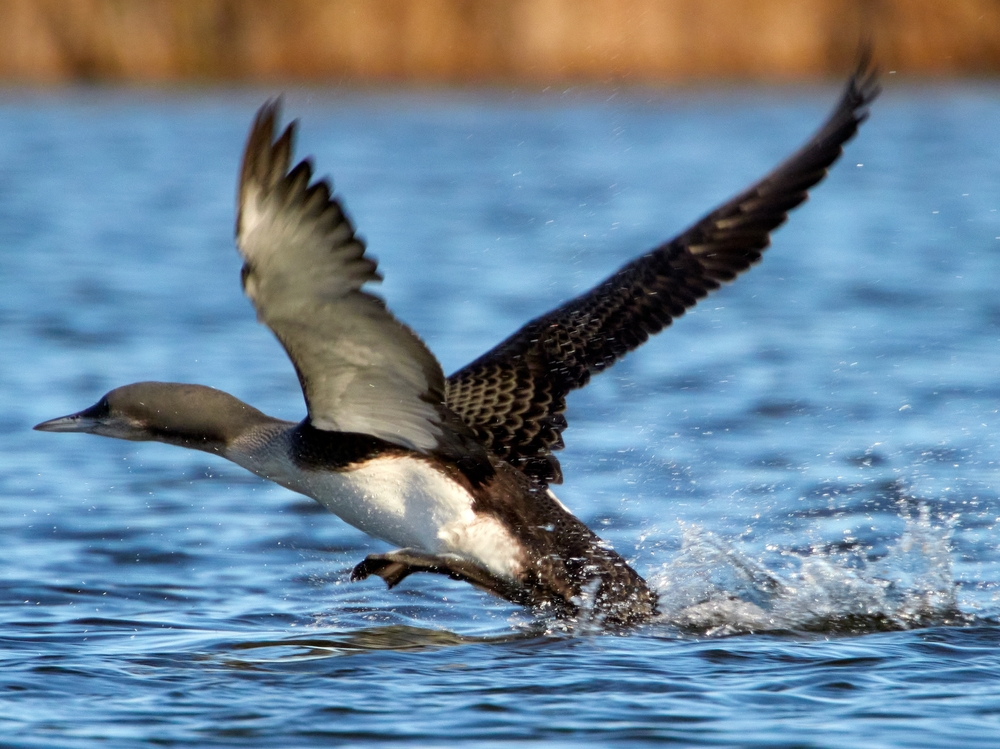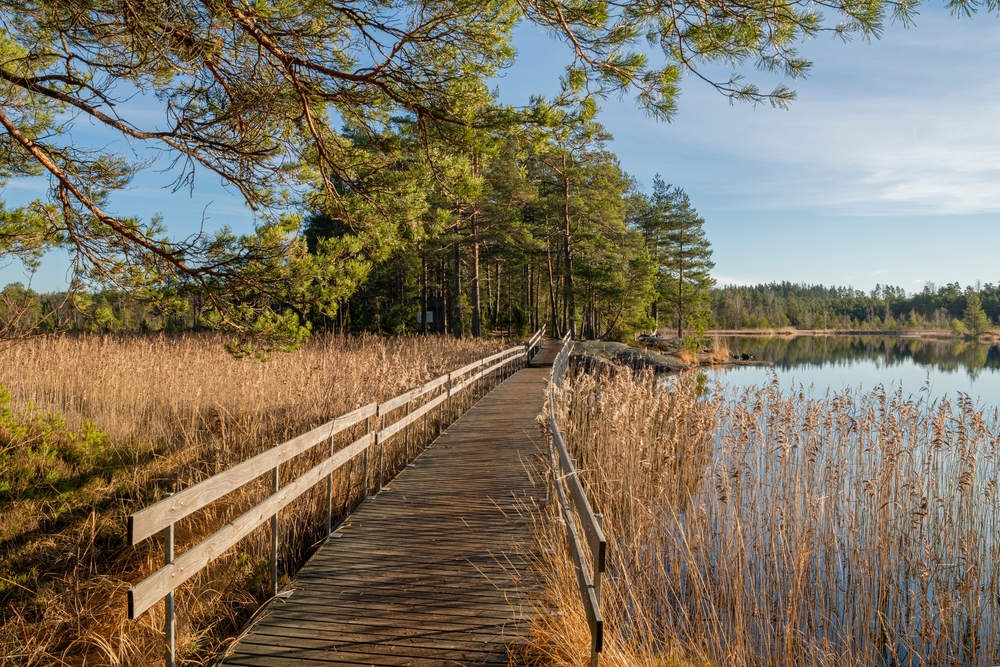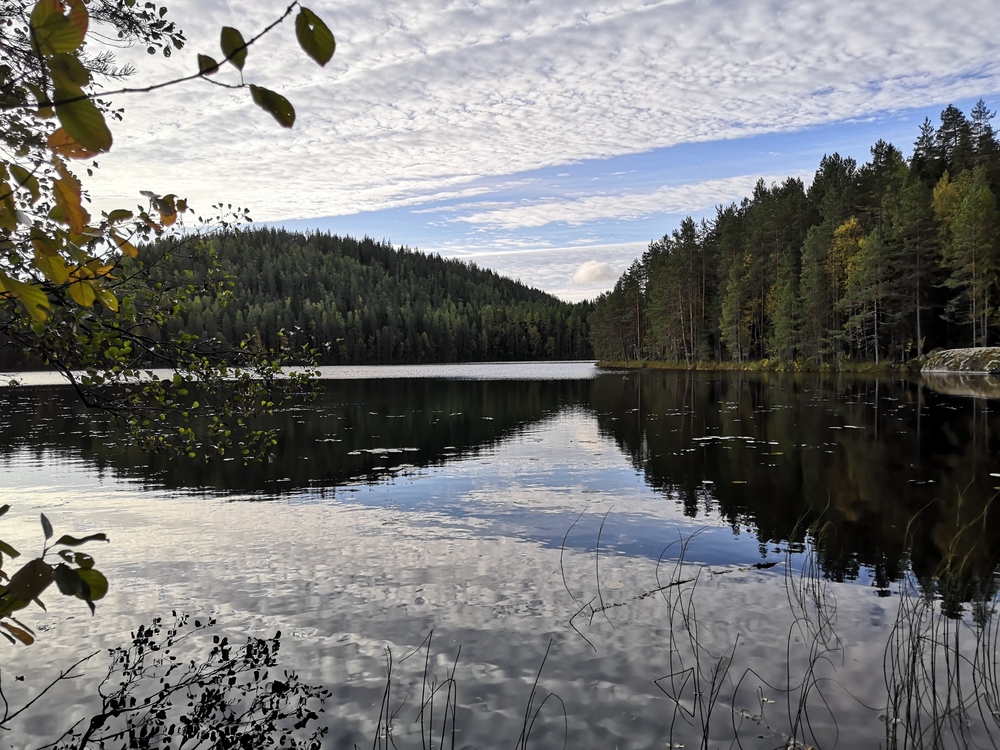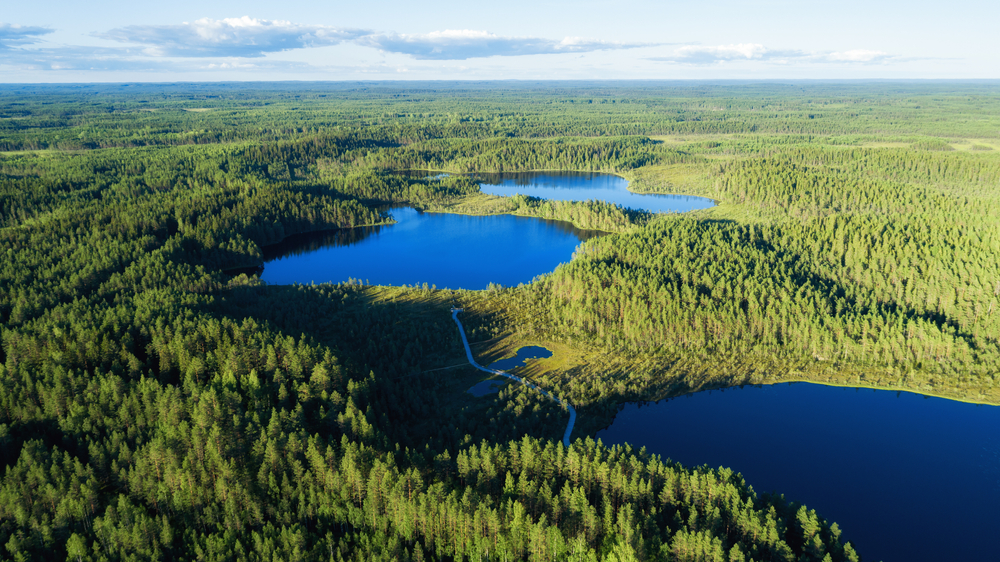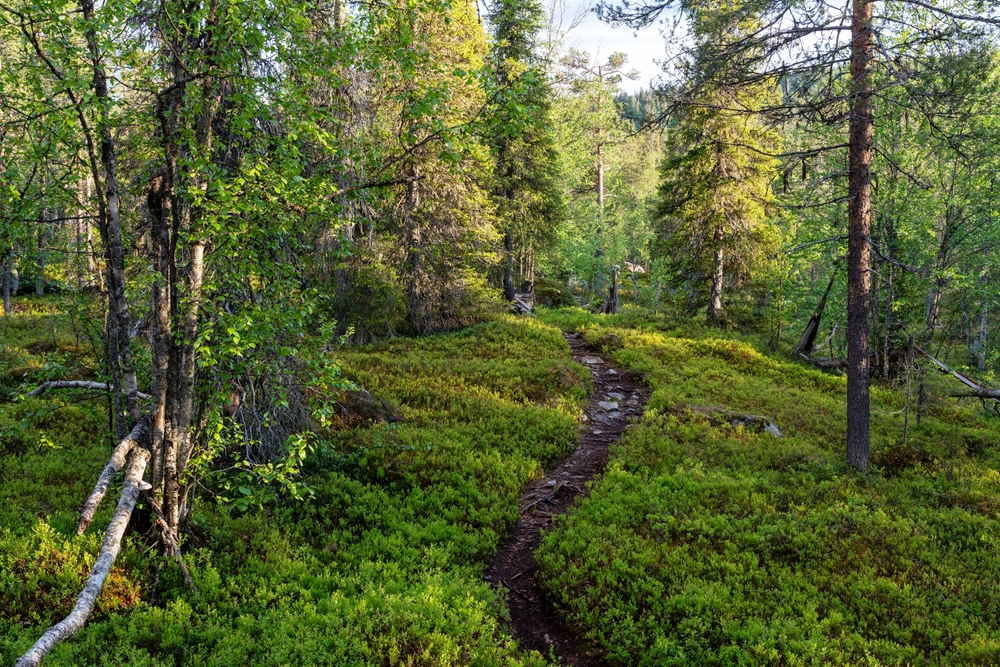Torronsuo Overview
Torronsuo National Park, known as Torronsuon kansallispuisto in Finnish, is a protected area in southern Finland, covering approximately 10.1 square miles (26.2 square kilometers). Located in the Tavastia Proper region, near the town of Tammela, the park is best known for its vast peat bogs, which are among the deepest in Finland.
Established in 1990, Torronsuo serves as an important natural sanctuary for wetland ecosystems, preserving rare plant species and providing a critical habitat for diverse wildlife.
The landscape of Torronsuo National Park is dominated by an extensive raised bog, formed over thousands of years through the slow accumulation of peat. The bog is interspersed with open wetlands, small patches of forested islands, and narrow ridges formed by glacial activity.
The terrain is largely flat, with the exception of occasional eskers and rock formations that provide subtle elevation changes. The vegetation is primarily composed of sphagnum mosses, sedges, and various wetland shrubs, while scattered pine and birch trees add to the scenery. In some areas, small ponds and drainage channels crisscross the bog, creating an intricate network of waterways that enhance the park’s natural diversity.
Torronsuo is a haven for birdwatchers, particularly during the spring and autumn migration seasons. The park’s wetlands provide an essential resting place for many migratory bird species, including cranes, geese, and various wading birds. Visitors may spot the striking western capercaillie, as well as black grouse and Eurasian curlews.
The park also supports several species of raptors, such as the northern goshawk and the Eurasian sparrowhawk. Among the mammals that inhabit the park, moose are the most prominent, often seen grazing at the bog’s edge. Smaller mammals such as red foxes, European badgers, and raccoon dogs also roam the area. Due to the park’s wet and challenging terrain, large carnivores like wolves or lynxes are rare visitors.
One of the most popular features of Torronsuo National Park is its well-maintained wooden boardwalk, which allows visitors to traverse the bog without disturbing its delicate ecosystem. This boardwalk provides an excellent opportunity for nature enthusiasts and photographers to explore the landscape while minimizing their impact on the fragile environment.
There are also observation towers strategically placed throughout the park, offering panoramic views and ideal birdwatching spots. During the winter months, cross-country skiing becomes a favored activity as the park’s open terrain and gentle slopes create excellent conditions for long-distance skiing.
Visitors can experience Torronsuo National Park through a variety of outdoor activities, including hiking, wildlife observation, and photography. The trails are relatively short but provide immersive experiences within the vast bog landscape.
Due to the soft, waterlogged ground, most hiking is restricted to designated paths and boardwalks to protect both visitors and the environment. The solitude and expansive open spaces make the park a favorite among those seeking tranquility in nature.
Torronsuo faces conservation challenges primarily related to drainage and peat extraction in the surrounding areas, which can affect the hydrology of the park. However, conservation efforts have successfully restored some disturbed areas, and ongoing management ensures that the bog remains intact.
The national park status provides strong legal protection against commercial exploitation, preserving one of Finland’s most pristine wetland habitats. The commitment to conservation and sustainable visitor access ensures that Torronsuo National Park will continue to serve as a refuge for wildlife and a place of natural beauty for future generations.











































































